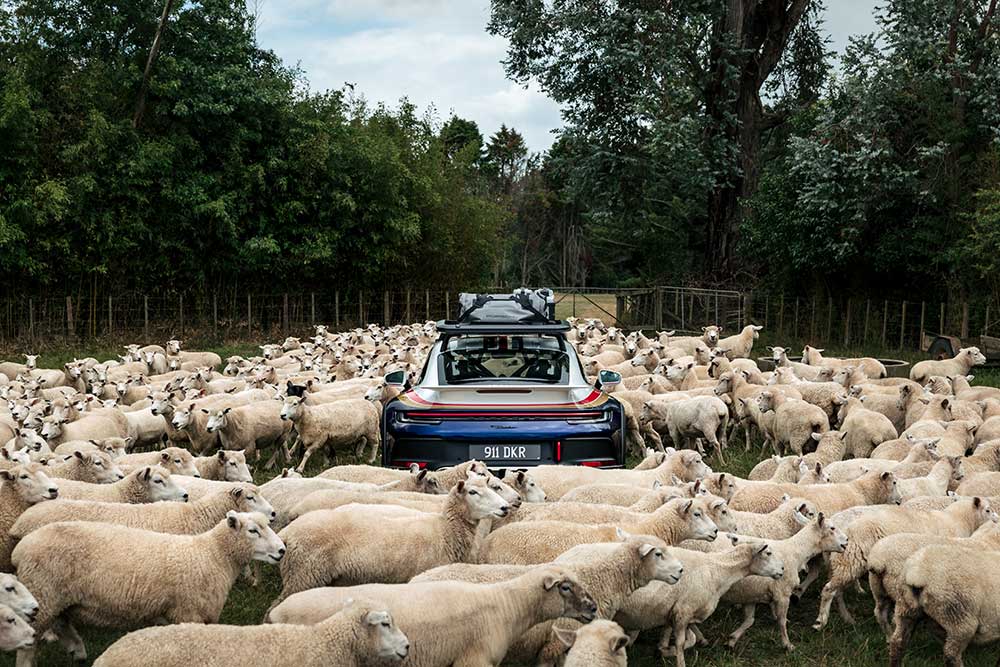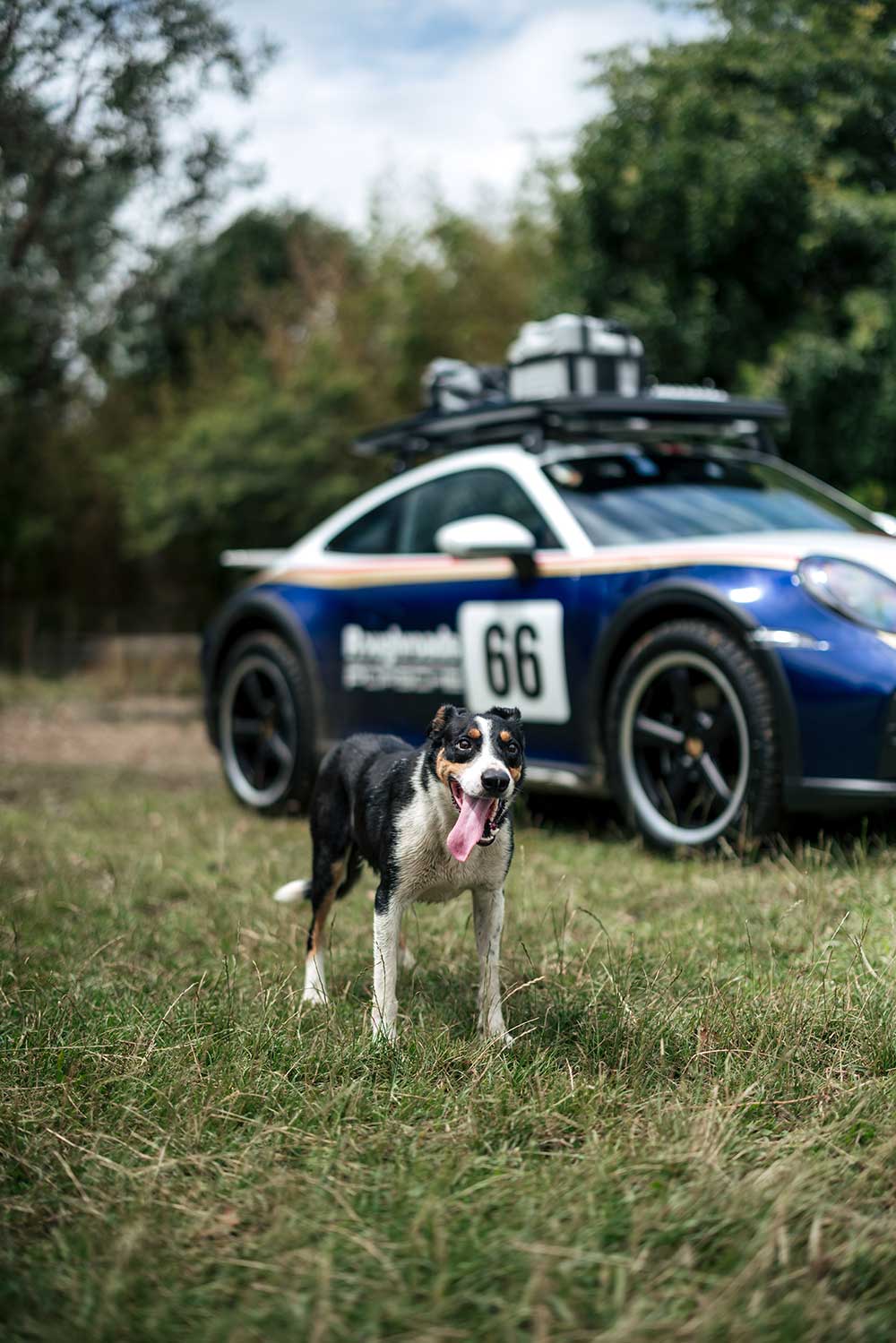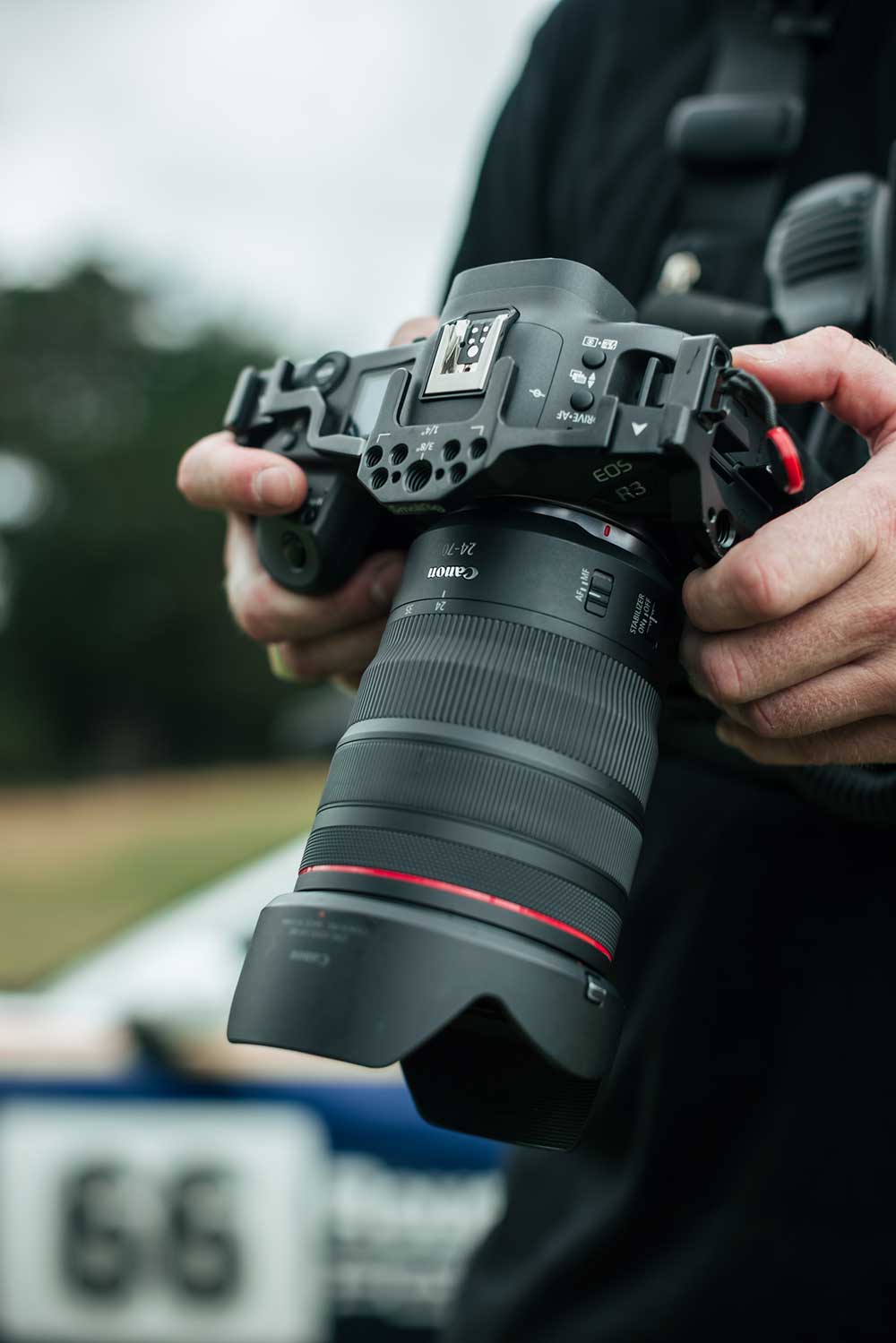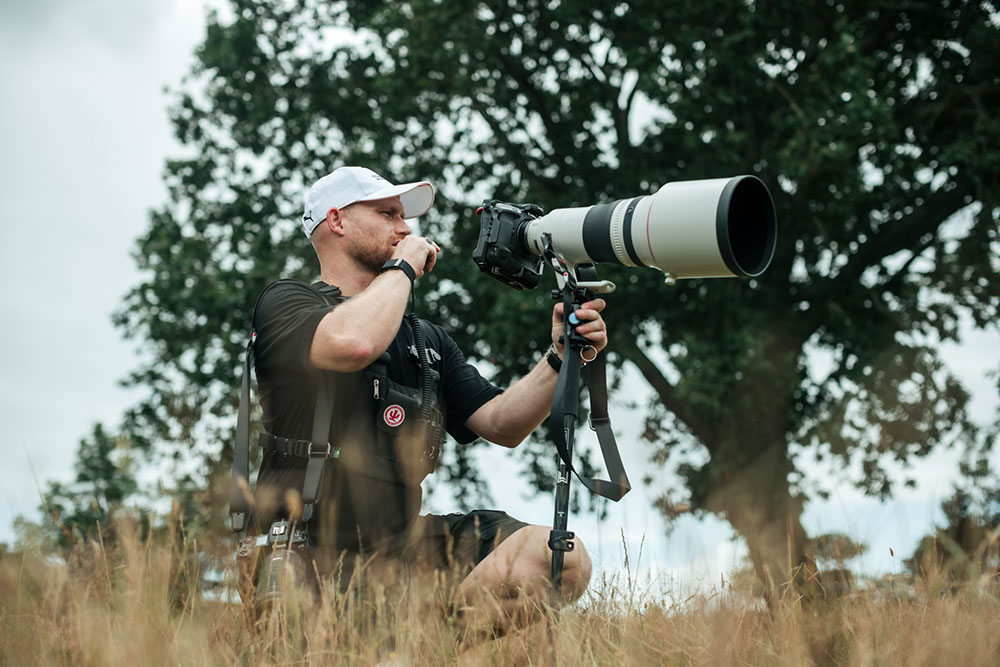- A professional's guide to choosing the perfect lens for car photography
-

Automotive photography can be challenging. Capturing automotive demands cutting-edge equipment which is built to withstand the fast pace and rough shooting conditions. For me, the transition to shooting with Canon RF lenses has hugely benefited my work, particularly during this unique shoot featuring the 911 Dakar.
The shoot's brief presented an opportunity to create localised content featuring the 911 Dakar in a classic Kiwi setting. The global content for the dealer network had been shot in the Australian Outback, and the objective was to infuse a New Zealand twist to the imagery.
This assignment ended up having personal significance for me as I returned to the rural landscapes of Kaihere, a small Waikato community overlooking the Hauraki Plains, where I spent my childhood on my family's dairy farm. Having moved to Auckland after I left school to pursue photography, the assignment brought my career full circle, allowing me to merge my past with my present.
The creative vision for the shoot demanded the advanced features of RF lenses. The ability to capture the speed and character of the 911 Dakar against the backdrop of New Zealand's iconic sheep farms required the exceptional autofocus, sharpness, build quality, and optics that RF lenses provide.

Extremely fast autofocus
One of the key advantages of shooting automotive with RF lenses is their lightning-fast autofocus capabilities. The combination of the dual-pixel CMOS AF of the EOS R5 & EOS R3 and RF lenses was really beneficial for capturing static shots or dynamic, high-speed driving scenes. The autofocus tracking modes, specifically designed for vehicle tracking, alleviate the stress of focusing points, enabling me to focus strictly on my compositions.

Sharp throughout the aperture range
RF glass offers exceptional sharpness throughout the entire aperture range, even when shooting wide open. This increased sharpness allows me to navigate successfully through a broader range of lighting conditions. Not only can I shoot wide open for low lighting conditions, but also for artistic reasons. This provides me with flexibility and creative freedom to create the desired look and feel.

Updated build quality
In the unpredictable world of automotive photography, the updated build quality of RF lenses is a crucial asset. With the ability to withstand diverse environmental elements, from urban streets to race tracks, off-road terrain to snowy landscapes, these lenses ensure durability and reliability under all circumstances.

Optics matching high megapixel sensors
Initially I had hesitation for the transition from Canon's 1 series DSLRs to mirrorless cameras. However, the advantages of RF lenses and mirrorless bodies quickly became apparent. These lenses boast increased optics designed to match the higher megapixel sensors of modern cameras, ensuring optimal image quality and detail.

Canon RF 24-70mm F/2.8 IS
The staple, the go to all-rounder. This one has to be the one I grab the most, due to its unmatched versatility. Having a great focal length range to shoot things from wide angles to semi tight framing means it’s great for creating story telling wide angles, interior shots as well as longer images more focused on the subject. Having IS (image stabilisation) in the new RF 24-70mm has been a great asset for rolling content shooting car to car to help ensure the subject is sharp and in focus when shooting slow shutter speeds right down to a 1/15.

Canon RF 50mm F/1.2
This lens has quickly become one of my favourites. Its extremely sharp optics combined with its shallow depth of field allows me to create some really unique looking images. This lens really surprised me with its optics, being extremely sharp even when wide open, to the caliber I’d never seen in a f/1.2 lens before. This lens stays on one of my bodies almost always, utilising it mostly for detail shots and its low light performance.

Canon RF 70-200mm F/2.8 IS
Another staple lens made better once again. I really enjoy the compact size of the new RF 70-200mm, as well as the sliding door on the hood allowing me to rotate my CPL filter without having to take the hood off. This is a great feature as it allows me to rotate the filter for multiple exposure shots which I later stack in a much easier and convenient way. I use this lens for a huge range of things, from moments at the track where more focal length is needed, to compressing the FOV to allow me much tighter framing with more focus emphasised on the vehicle of subject being shot. I really like the versatility of this lens paired with its great image stabiliser and autofocus.
For me, the advantages of RF lenses exceeded the demands I had for them in the automotive photography space. It allows me to further push my creative freedom on shoot with reliable, innovative and top of the glass optics.
• RF lenses, combined with dual-pixel CMOS AF on EOS R5 & EOS R3, provide swift autofocus and effective vehicle tracking modes.
• RF lenses deliver exceptional sharpness at all apertures, offering flexibility in various lighting conditions and creative scenarios.
• The durable construction of RF lenses withstands diverse environmental conditions, making them reliable for automotive photography.
• RF lenses are optimized for high-resolution sensors, ensuring excellent image quality and detail.
• Canon RF 24-70mm F/2.8 IS: A versatile lens ideal for wide angles, interior shots, and tight framing, with image stabilization for rolling content.
• Canon RF 50mm F/1.2: Known for its sharp optics and shallow depth of field, perfect for detail shots and low light performance.
• Canon RF 70-200mm F/2.8 IS: Compact and versatile, suitable for track moments, with a sliding door on the hood for easy CPL filter adjustments.
What is the best lens for capturing fast movement?
The lens I really enjoy capturing fast movement with would be the RF 24-70mm F/2.8L IS. I really like the look of wide-mid length panning shots as they allow you to showcase more of the surroundings of the subject. Wide panning shots can be much harder to pull off than longer focal length panning shots as the foreground is much closer to the camera, resulting in a much slower shutter speed to get the same desired look. The image stabilizer in the 24-70mm is a welcomed addition to the EF lens and is something which is hugely beneficial to ensuring the subject is as sharp as possible despite the moving camera.
I really enjoy freezing fast movement with the 24-70mm F/2.8 also, as it requires you to get much closer to the subject in order to give a much more impactful perspective for the viewer. It's a great way to create a really dynamic image.
Watch the Full Video Here:

Join us as we talk to motorsport videographer Tenayah McLeod about event prep, preferred gear, and post-event workflow.

Canon Professional Services at Repco Bathurst 1000, with the EOS R3.

Matt Cherubino shares aerial photography tips using the EOS R5.